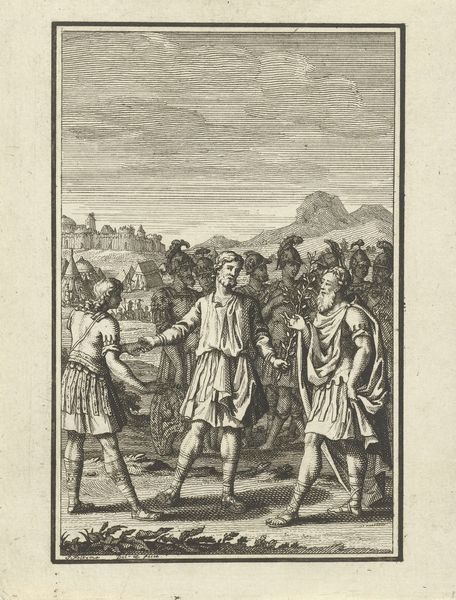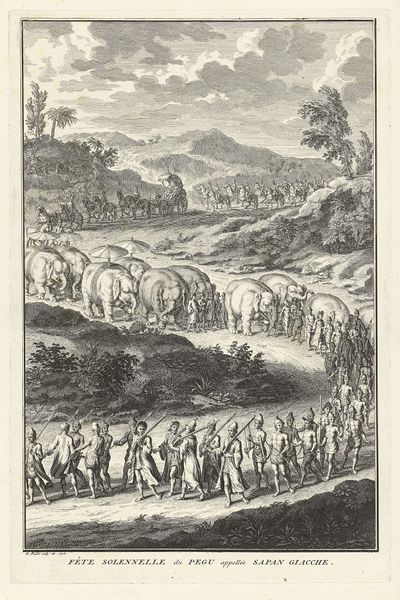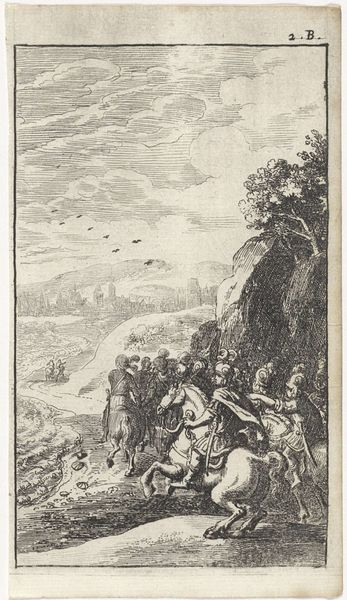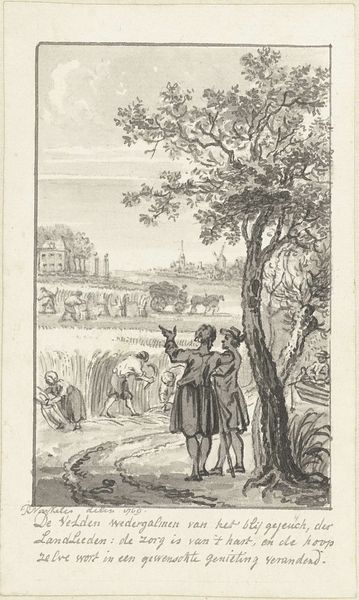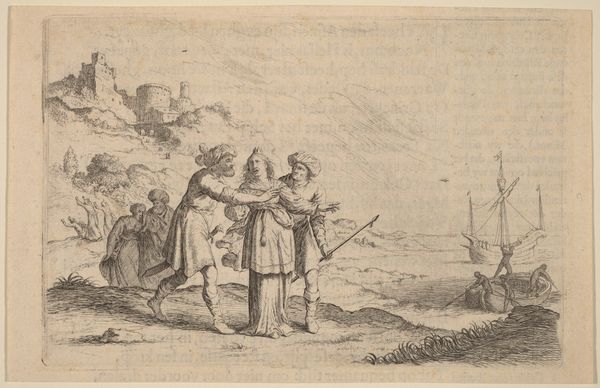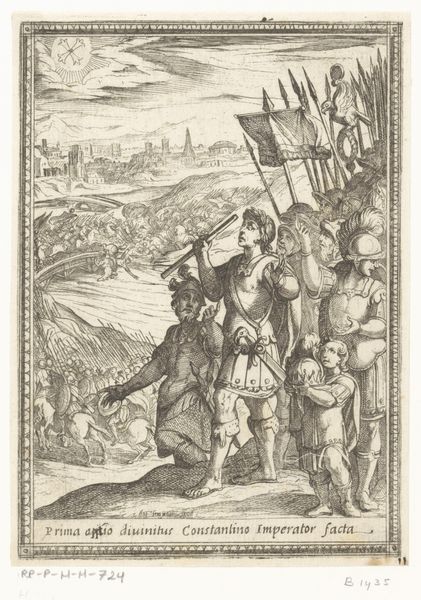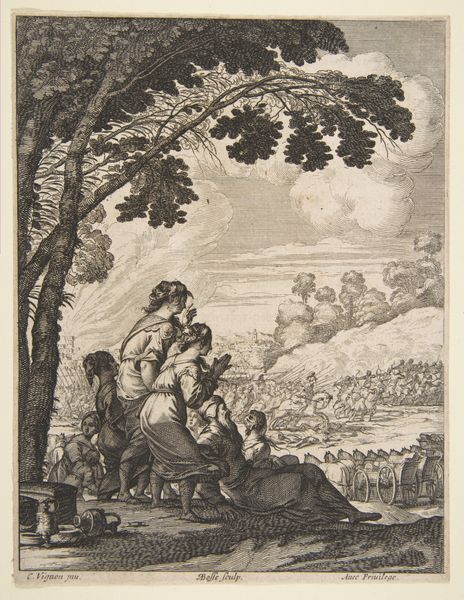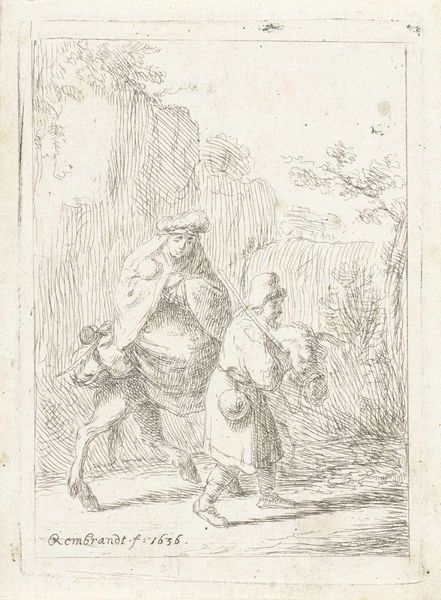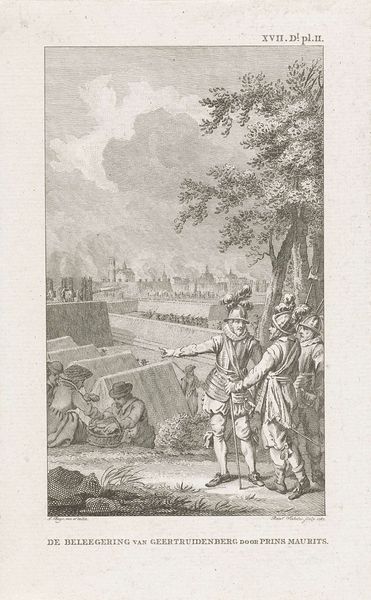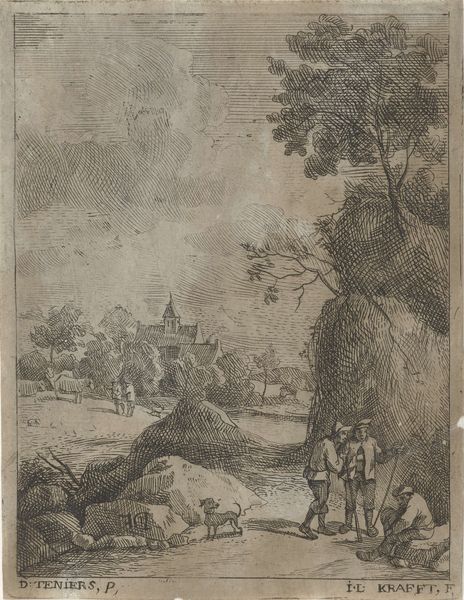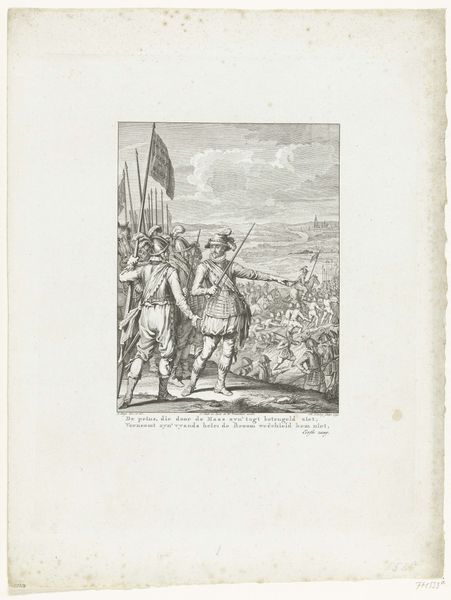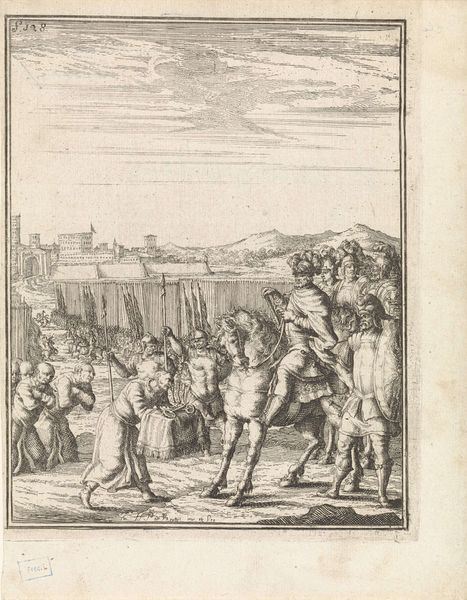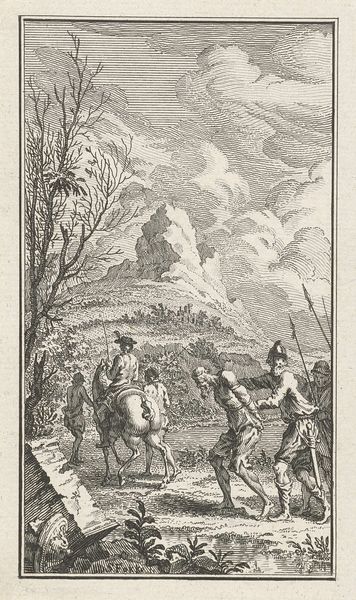
print, engraving
#
baroque
#
dutch-golden-age
# print
#
landscape
#
figuration
#
mountain
#
line
#
genre-painting
#
engraving
Dimensions: height 111 mm, width 71 mm
Copyright: Rijks Museum: Open Domain
Editor: So, this is "Ruiters in een berglandschap," or "Horsemen in a Mountain Landscape," an engraving by Paulus Lesire from 1643. It’s incredibly detailed for such a small print! It reminds me of a stage, with these figures placed in front of very dramatic scenery. What do you see in this piece? Curator: Immediately, I'm struck by the layering of symbols Lesire uses. The mountain itself—in many cultures—represents aspiration, challenge, a connection to the divine. And look how these figures, these "horsemen," are positioned in relation to it. They're not conquering it, but observing, almost contemplating its immensity. Editor: That’s a good point! They’re not at the summit. They almost seem like travelers taking a break to admire the view. Curator: Precisely. And consider the horse, a long-standing symbol of power, virility, and journey. Yet here, the horse is passively held by an attendant. What does this suggest about the traditional associations we might have? What happens when power is "tamed" or recontextualized? What’s emphasized when virility pauses in reflection? Editor: That's fascinating! I never considered how much the horse's submissive pose changes its symbolism. The men almost seem like they’re deciding what path to take. The man pointing to the distance; is he the leader? Curator: Perhaps. Or perhaps he is directing attention to something we, as viewers, are meant to contemplate, too. Do you think there is significance in their clothing, perhaps something that may suggest class or role? Editor: The man standing separately wears similar attire to the men traveling with the horse and appears to be carrying an axe! He seems so much smaller. Curator: Yes! I suggest his attire aligns his position; to the land he seems to be working on, giving us another interesting aspect. The entire composition can be viewed as a visual narrative where symbols and context interact, provoking questions about our relationship with ambition, landscape, and purpose. Editor: Wow, I am definitely going to think differently about landscapes from now on. Thank you! Curator: My pleasure. Seeing how artists use and repurpose symbols across time helps us better understand ourselves.
Comments
No comments
Be the first to comment and join the conversation on the ultimate creative platform.
